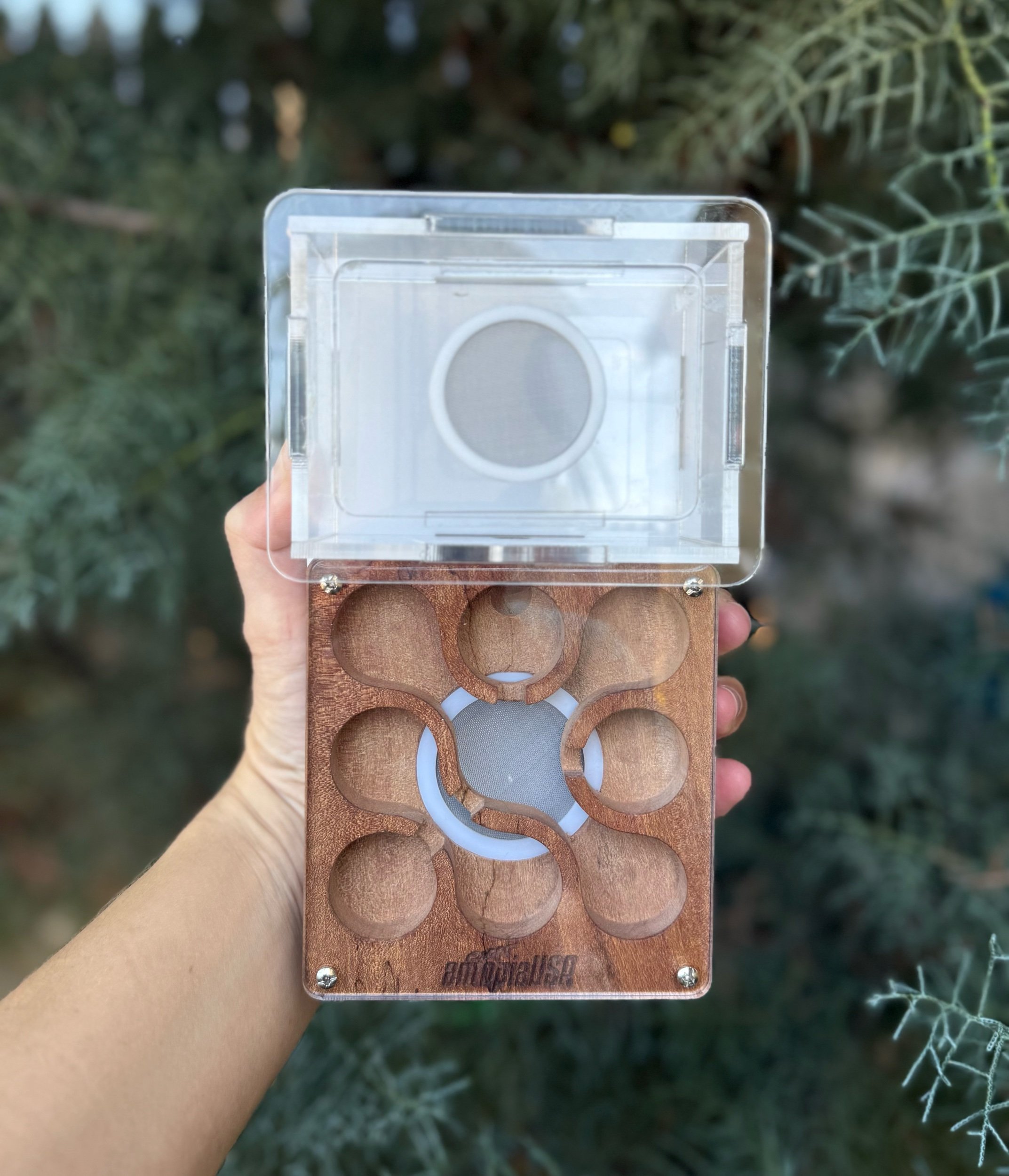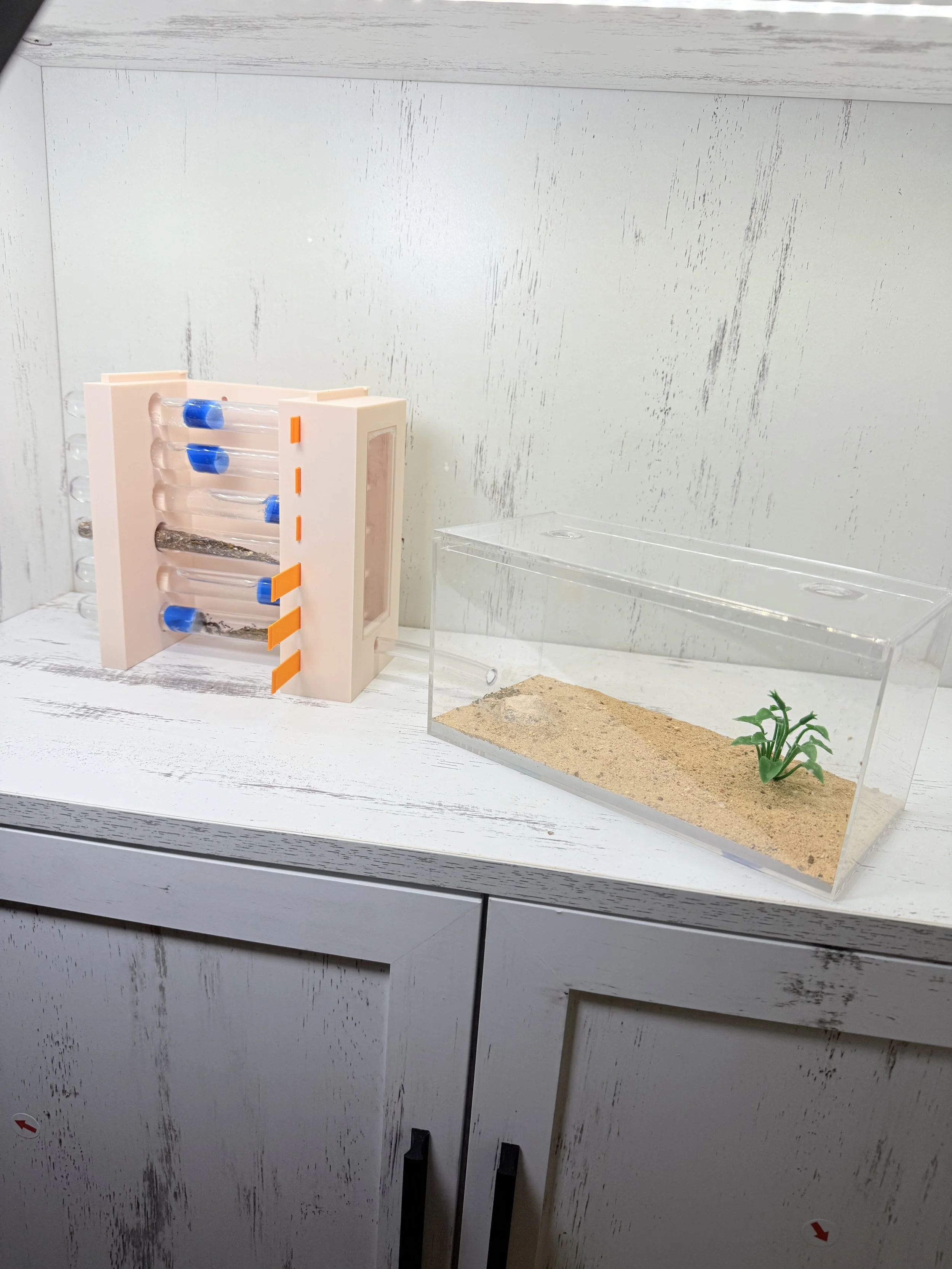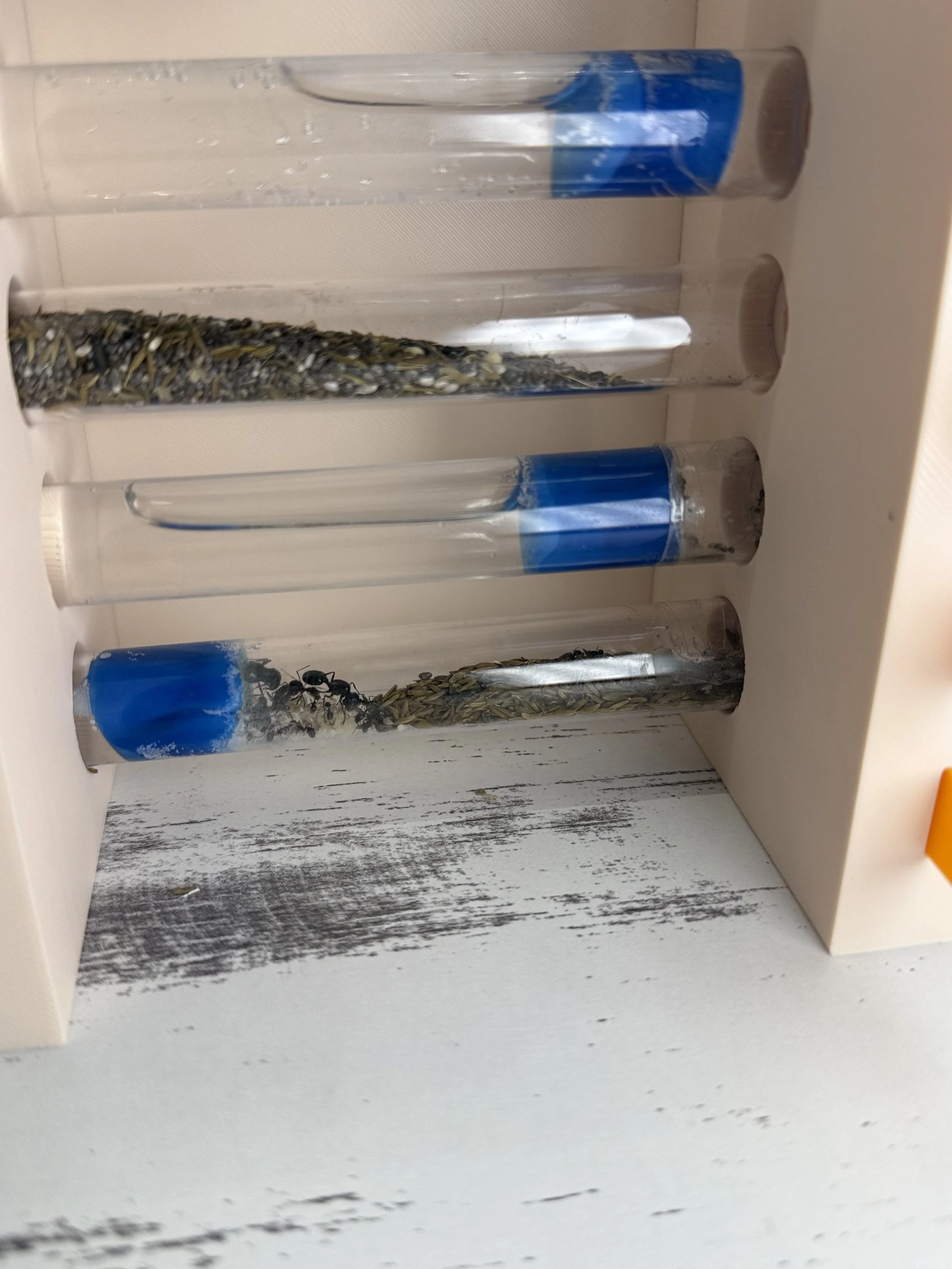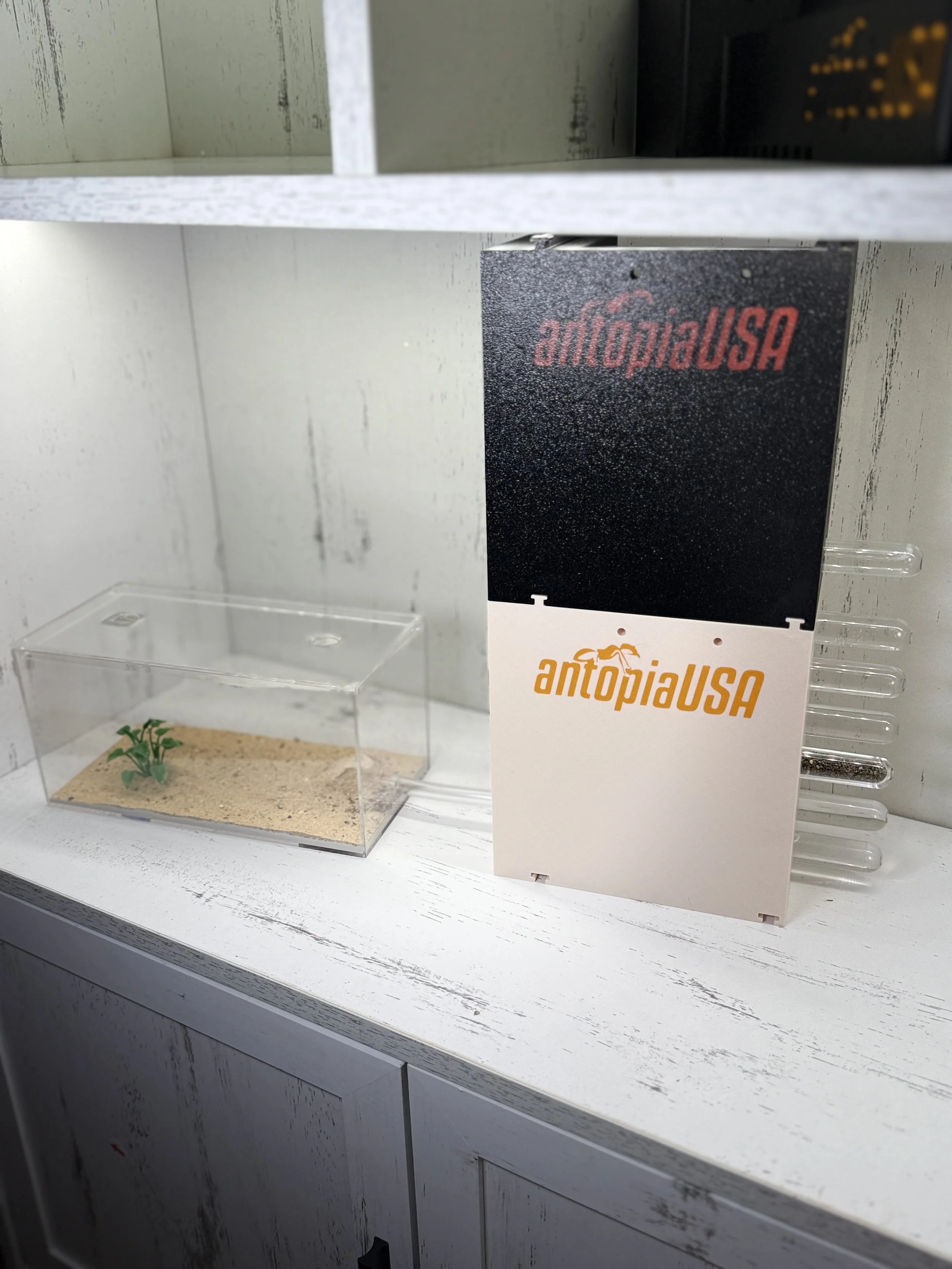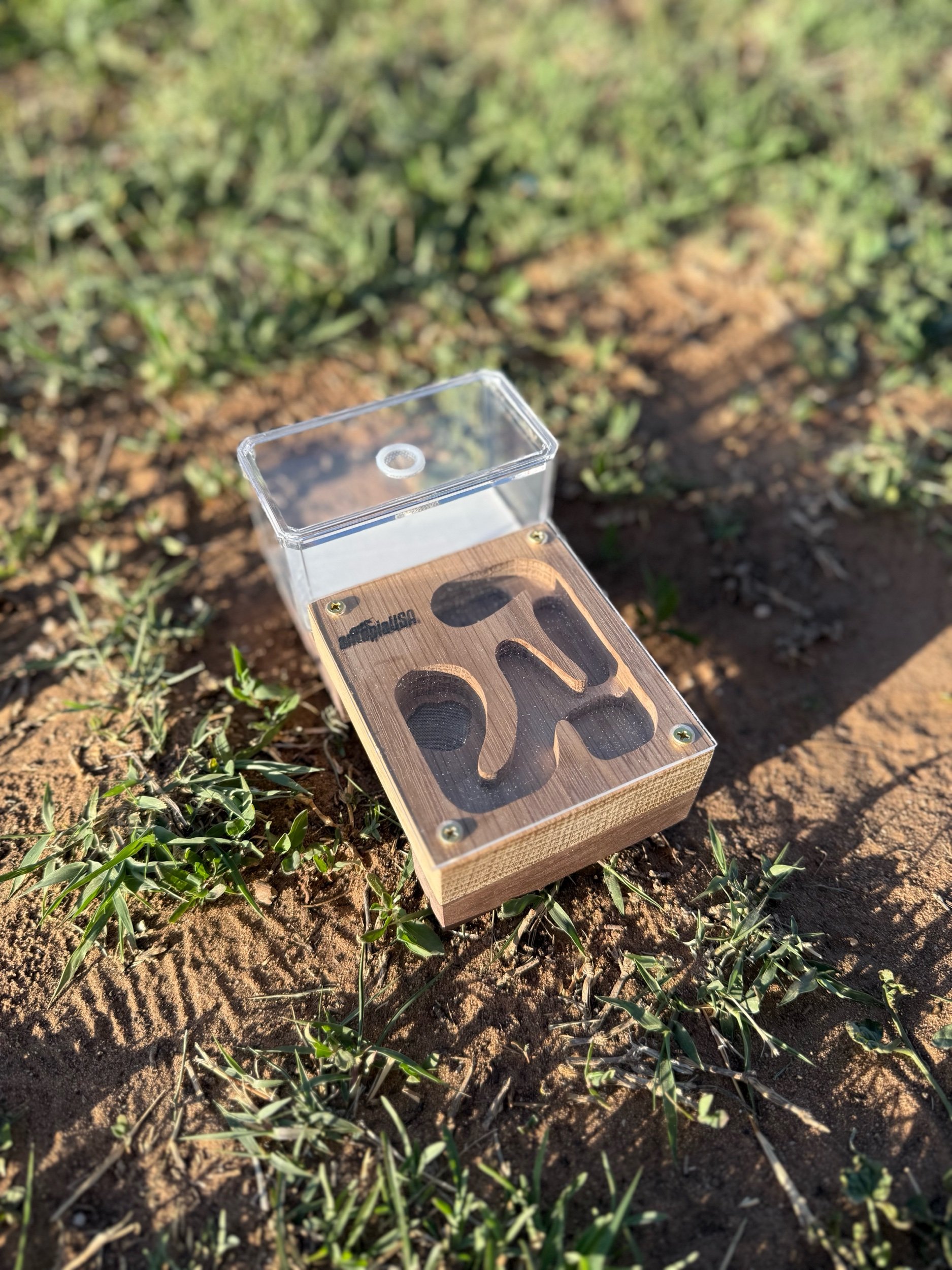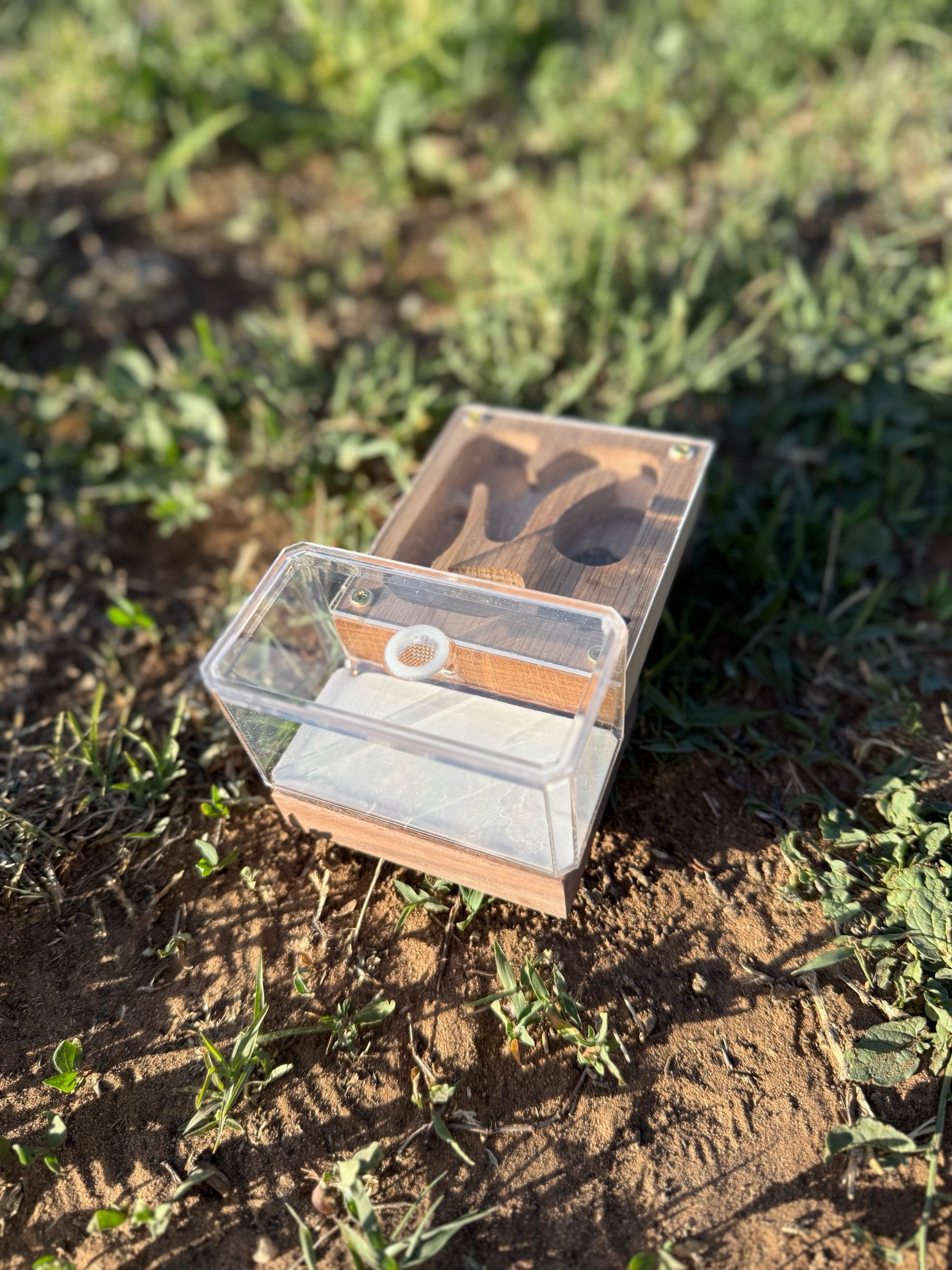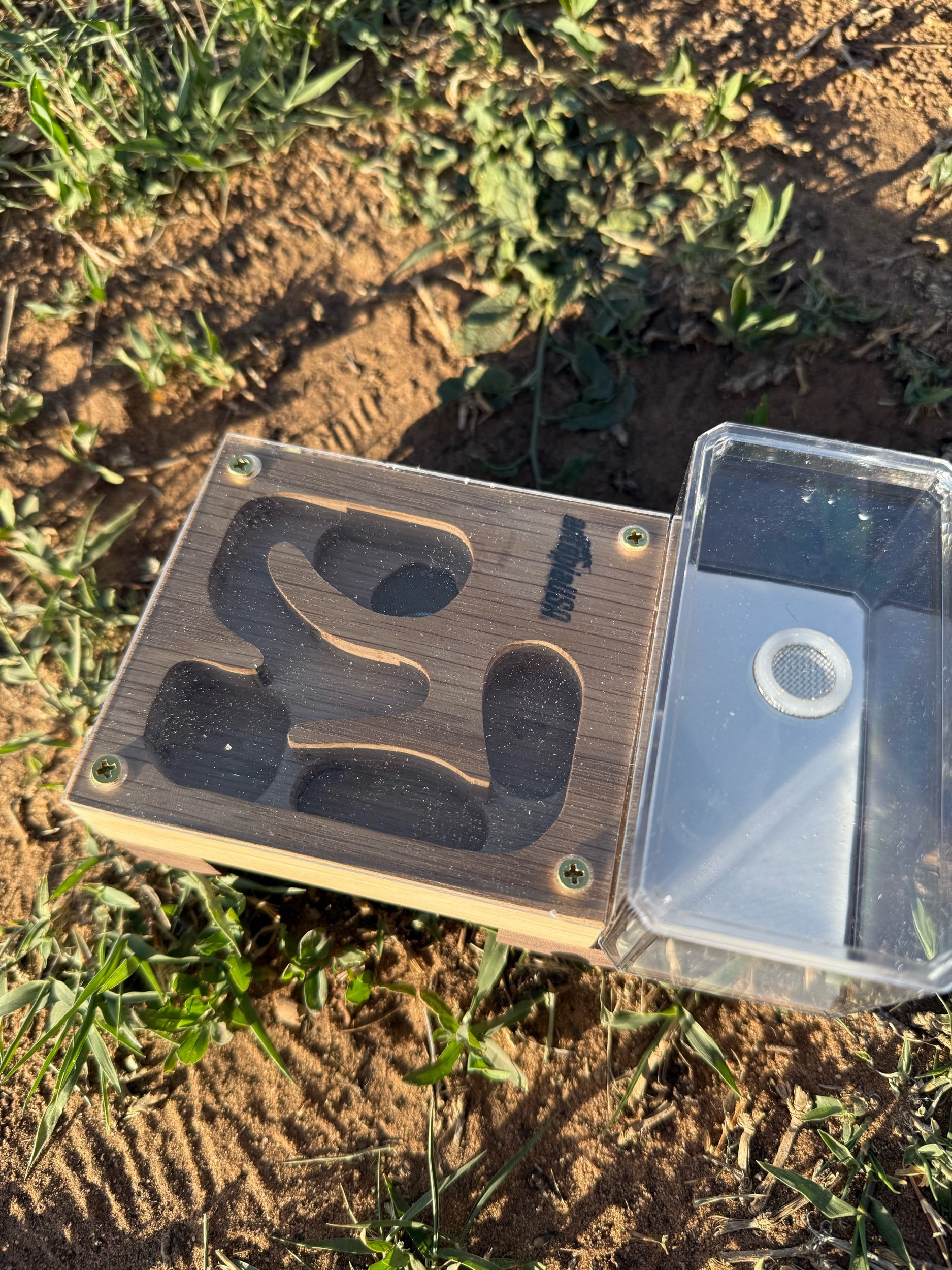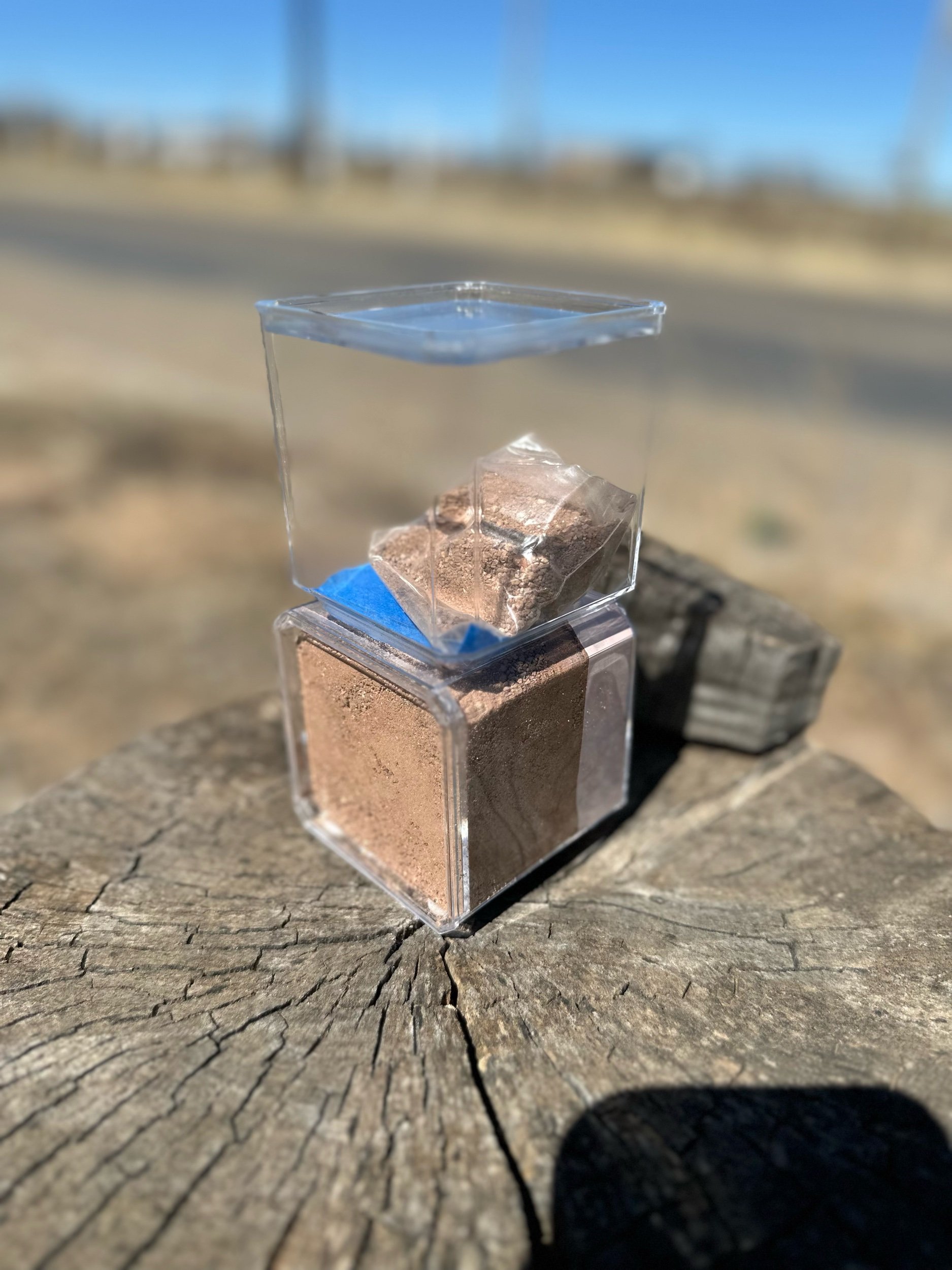 Image 1 of 2
Image 1 of 2

 Image 2 of 2
Image 2 of 2



Texants founding digging ant hill nest v2 ( Larger nest area)
⛰️ AntopiaUSA Digging Ant Hill V2 – Classic Look, Fully Functional Design
Bring the charm of traditional digging habitats into the modern age with the AntopiaUSA Digging Ant Hill V2 — a fresh, fully tested upgrade to the classic ant hill concept. This setup is perfect for founding queens or young colonies that benefit from natural digging behavior, with added structural safety and smart features.
Key Features:
• Real Digging Habitat – Designed for actual colony use, not just display
• Anti-Collapse Infrastructure – Reinforced internal structure prevents dangerous cave-ins
• Flip-Down Front Panel – Makes relocating your colony easy when it’s time to upgrade
• Special Soil Blend Included – Custom-formulated for digging, low collapse risk, and ideal humidity retention
• Founding-Stage Ready – Sized specifically for queens and small starter colonies
• Not Recommended for Tiny Species – Designed for medium-to-large species only for safety and effectiveness
Setup Instructions:
Add included soil to nest compartment
Tap gently on a hard surface to settle the substrate
Add 15–20 ml of water to hydrate the soil
Let it settle for 5–6 hours before introducing ants
🖼 Second photo shows size comparison – V1 on the right, V2 (this product) on the left
💥 Classic form. Proven function. A must-have for keepers who love natural nesting behavior.
⛰️ AntopiaUSA Digging Ant Hill V2 – Classic Look, Fully Functional Design
Bring the charm of traditional digging habitats into the modern age with the AntopiaUSA Digging Ant Hill V2 — a fresh, fully tested upgrade to the classic ant hill concept. This setup is perfect for founding queens or young colonies that benefit from natural digging behavior, with added structural safety and smart features.
Key Features:
• Real Digging Habitat – Designed for actual colony use, not just display
• Anti-Collapse Infrastructure – Reinforced internal structure prevents dangerous cave-ins
• Flip-Down Front Panel – Makes relocating your colony easy when it’s time to upgrade
• Special Soil Blend Included – Custom-formulated for digging, low collapse risk, and ideal humidity retention
• Founding-Stage Ready – Sized specifically for queens and small starter colonies
• Not Recommended for Tiny Species – Designed for medium-to-large species only for safety and effectiveness
Setup Instructions:
Add included soil to nest compartment
Tap gently on a hard surface to settle the substrate
Add 15–20 ml of water to hydrate the soil
Let it settle for 5–6 hours before introducing ants
🖼 Second photo shows size comparison – V1 on the right, V2 (this product) on the left
💥 Classic form. Proven function. A must-have for keepers who love natural nesting behavior.



